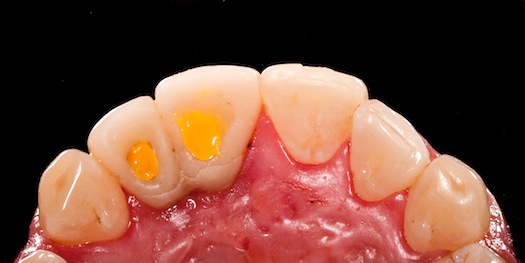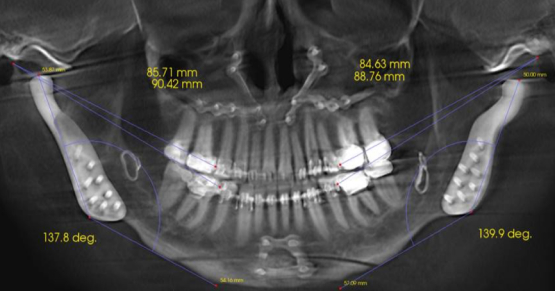A Rapid Technique for Closing Screw Access Channels
Screw access channels are inherent to implant dentistry. I want to discuss a convenient technique for temporarily obturating these “chimneys.”
A restorative dentist can use a variety of materials to close off a screw access channel in a screw-retained restoration. Some materials provide better longevity than others, and some provide easier removal than others. Ultimately, the material and technique selected should be based on the requirements of the individual situation.
There are everyday clinical situations in which I’d like to close off a screw channel, yet I know I’ll have to come back and regain that access in the short term. In these cases, I’d rather not have to drill back through a relatively rigid material like restorative composite — temporary inlay materials like Fermit or its newer sibling formulations, such as System.Inlay/Telio CS Inlay (Ivoclar Vivadent) works well due to its low strength, relatively high elasticity, and reasonable color. Other materials in this category include E-Z Temp Inlay (Cosmedent) and Clip (Voco).
Regardless of the manufacturer, all these materials require an intermediate layer to protect the screw itself from restoration removal and to prevent the material from locking into the screw’s hexagon. Despite the benefits of an elastic material like Fermit, sometimes it’s still more time-consuming than I would like, both in placing the restoration and removing it later. When I want something quick, I will often switch up my method by obturating the screw channel with an extra-low viscosity PVS impression material like Aquasil Ultra XLV (DENTSPLY/Caulk).

Insert the restoration and tighten the abutment screw to the desired torque. As a habit, I routinely rinse the screw access channel with 0.12% chlorhexidine gluconate and then dry. Inject the XLV directly into the channel, slowly backing out as the chimney is filled. Once finished, wipe the excess with your finger and wait for the material to set.
Advantages to using this technique include obturating the screw access channel to prevent food and debris impaction while protecting the screw head. In addition, no cotton or PTFE tape is required as an intermediate layer, greatly simplifying removal. Though this technique is fast, it’s not perfect.
The main disadvantage is the esthetic compromise due to the color of the PVS impression material. I use Aquasil Ultra XLV, and there is no mistaking its bright orange color. Alternatively, one could use clear silicone, which would likely lead to a very dark temporary restoration if metal cylinders are used. Additional disadvantages include the time required for the material to set and the lack of bond to prevent bacterial ingress.

In a perfect world, we would have a fast-setting, opaque, tooth-shade PVS that could be syringed easily into the screw channels, but until then, there are times this technique won’t work due to the esthetics. Still, I am surprised by how often I can use this technique. Despite the shortcomings, using PVS to close off a screw access channel is another handy trick I like to keep in the bag. I hope you find it useful as well.
SPEAR campus
Hands-On Learning in Spear Workshops
With enhanced safety and sterilization measures in place, the Spear Campus is now reopened for hands-on clinical CE workshops. As you consider a trip to Scottsdale, please visit our campus page for more details, including information on instructors, CE curricula and dates that will work for your schedule.

By: Darin Dichter
Date: January 28, 2019
Featured Digest articles
Insights and advice from Spear Faculty and industry experts


